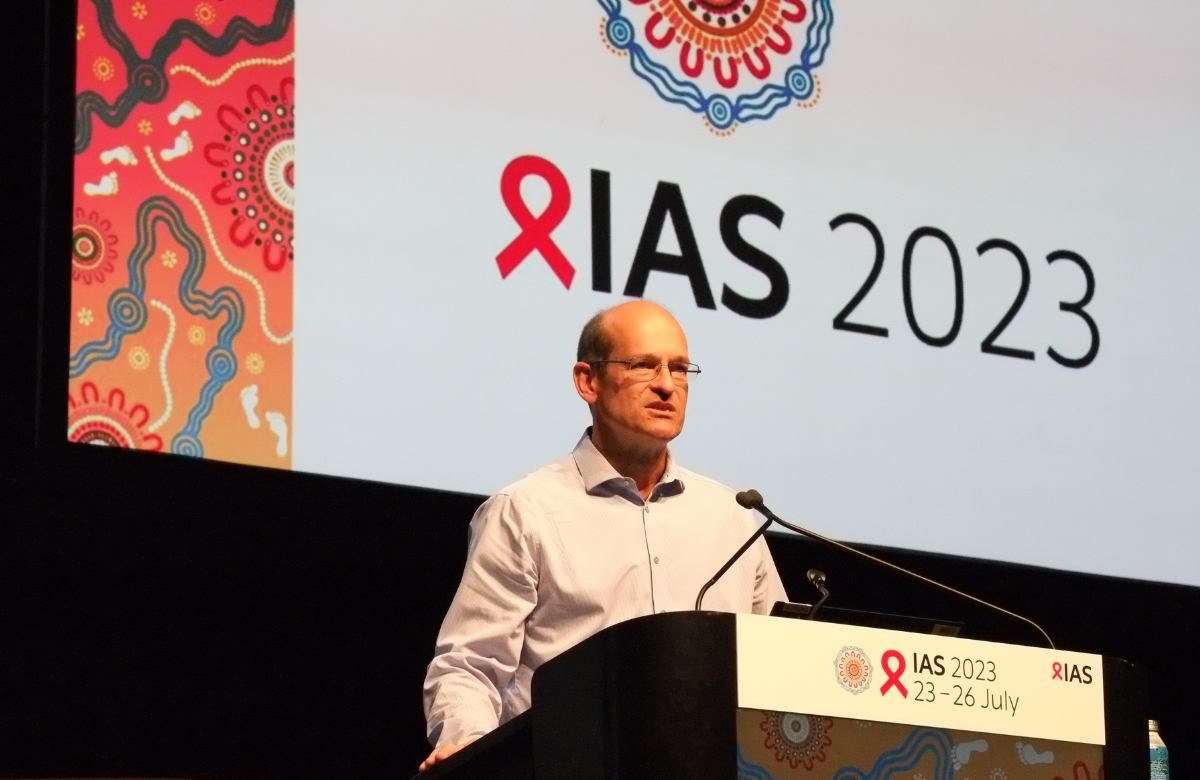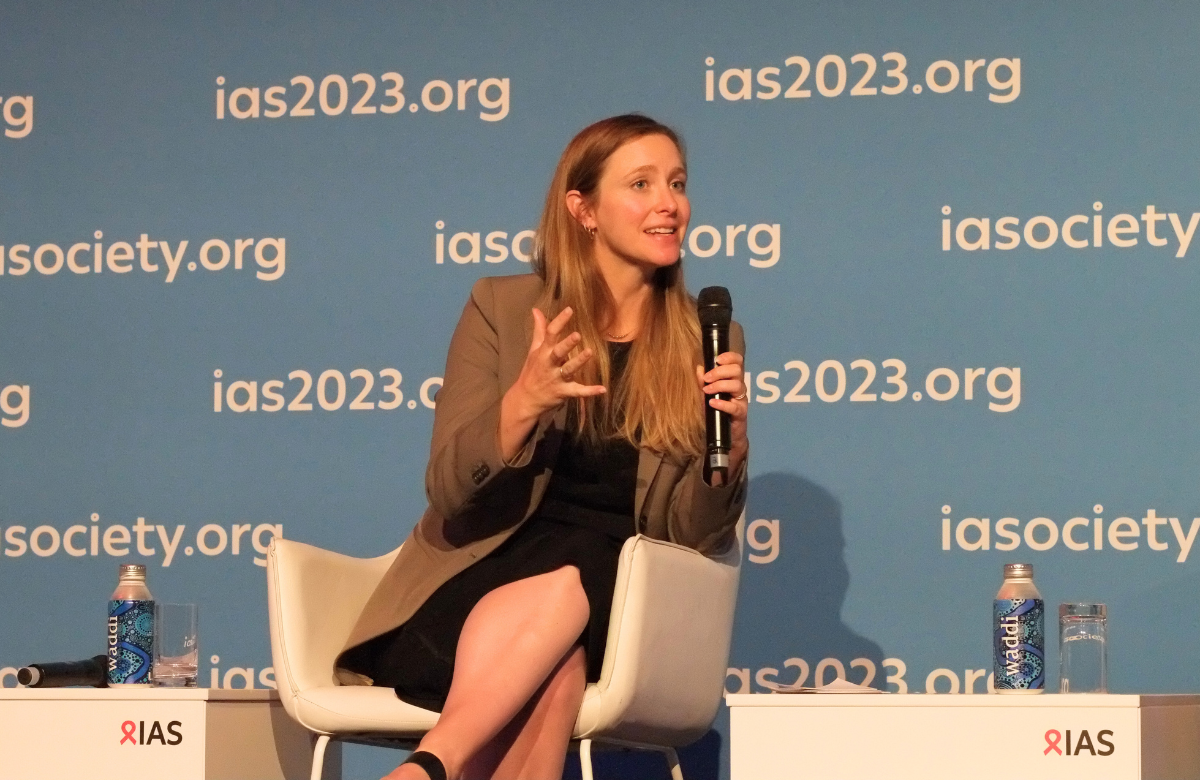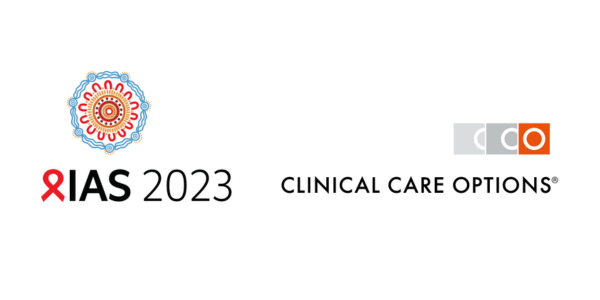Statins and HIV: how can the REPRIEVE findings be implemented in the real world?

Findings from the landmark REPRIEVE trial, which tested a daily statin medication for people living with HIV, were presented earlier in the week at the 12th International AIDS Society Conference on HIV Science (IAS 2023) in Brisbane, Australia. The study showed that people at low to moderate cardiovascular risk – a group that normally would not be prescribed statins – had a 35% lower risk of major cardiovascular events such as heart attack or stroke when given pitavastatin.
Although HIV is a known risk factor for cardiovascular disease, doctors have been hesitant to prescribe statins for people with low to moderate cardiovascular risk because of a lack of data on whether they would be effective. The lead investigator of the REPRIEVE trial, Professor Steven Grinspoon suggested that guidelines should be amended to recommend that people living with HIV should be offered statin therapy.
The benefits were clear in the REPRIEVE trial, but they must be weighed against potential harms. The statin used is associated with a small increase in the rate of diabetes, but this could still mean a substantial number of additional diabetes cases if statins are offered to everyone with low to moderate risk.
Dr Andrew Hill of the University of Liverpool told aidsmap that some African doctors are unsure whether pitavastatin will provide meaningful benefits when taking into account the added risk for diabetes, which is a leading cause of death in Africa.
Pitavastatin is now available in many countries and it will be more broadly available when it goes off patent, likely in early 2024. This statin was chosen for REPRIEVE because it is generally well tolerated and does not interact with antiretrovirals. But if pitavastatin is not available, panellists said it would be reasonable to substitute another safe statin.
Statins “are not fancy drugs,” Grinspoon said. They are “really cheap” when off patent, which could potentially make them available to everyone.
The REPRIEVE findings underscore the need for better risk-prediction tools specific to people living with HIV. Panellists raised questions about who will manage cardiovascular disease prevention and statin prescribing, as assigning it to HIV specialists rather than primary care could limit access.
The panellists agreed that statin use should be part of a broader cardiovascular disease prevention plan that emphasises a heart healthy lifestyle.
Bictegravir safe and effective in pregnancy

Biktarvy is recommended for adult antiretroviral treatment but until now there have been no data regarding its safety and efficacy in pregnancy. Bictegravir is metabolised by enzymes which are more active during pregnancy and protein binding is reduced, potentially leading to lower concentrations of drugs.
This study looked at the safety, efficacy and pharmacokinetics of Biktarvy in women with HIV who had achieved viral suppression on their existing antiretroviral regimen and were in the second or third trimester of pregnancy.
Participants switched to Biktarvy on entering the study and all 32 participants maintained viral suppression at delivery and at the end of the 18-week postpartum observation period. One drug-related adverse event (false labour) was reported but there were no discontinuations of Biktarvy.
Blood samples were taken at regular intervals over 24-hour periods in the second and third trimesters and at weeks 12 and 16 after delivery. This showed that concentrations of bictegravir were lower during pregnancy than after delivery, but that the lowest concentrations recorded were still adequate.
No infants born to participants had detectable HIV. In infants, the time taken for bictegravir levels to fall by half was 43 hours, more than twice the half-life observed in adults (18 hours).
COVID-19 vaccine effectiveness lower in people with HIV who inject drugs

The study found that people with HIV with a history of injecting drug use had a higher risk of testing positive for SARS-CoV-2 after vaccination and did so sooner than other vaccinated people with HIV or people without HIV.
The investigators used data collected on SARS-CoV-2 testing in the province to identify people with HIV aged 19 and over who underwent testing for SARS-CoV-2 between December 2020 and December 2021. The study matched 2700 people with HIV and 375,043 HIV-negative people. Forty per cent of people with HIV had a history of injecting drug use compared to 4% of HIV-negative people. During the study period, 351 people with HIV and 103,049 HIV-negative people tested positive for SARS-CoV-2.
The investigators assessed vaccine effectiveness according to the number of vaccine doses received and the interval between receiving a second dose and testing positive for SARS-CoV-2. In people with HIV, vaccine effectiveness (the reduction in the risk of testing positive) was 65% in people with a history of injecting drug use and 80% in people without a history of drug use.
In people with HIV who did not have a history of injecting drug use, vaccine effectiveness remained above 80% up to 119 days after receiving a second dose. In people with a history of injecting drug use, vaccine effectiveness remained around 65% up to 119 days after receiving a second dose. In both groups, vaccine effectiveness declined after 120 days, to 64% in people with no history of injecting drug use and to 42% in those with a history of injecting drug use.
The study investigators say that their findings suggest vaccination is less effective in this group and people who inject drugs may need booster doses sooner than other people with HIV, but they caution that the sample size in the study was relatively small. They suggest the burden of co-morbidities in people who inject drugs as a possible explanation for the reduced effectiveness.
High blood pressure care needs to be funded as part of HIV treatment programmes

"Mass HIV treatment programmes need to include support and funding for diagnosis and treatment for hypertension," Professor Venter told the conference.
In two large studies, between a third and half of participants had high or borderline high blood pressure after four years on treatment.
The NAMSAL trial randomised 613 people with HIV in Cameroon to take either dolutegravir or lower-dose efavirenz (400mg) combined with tenofovir disoproxil fumarate (TDF) and lamivudine.
Weight gain increases the risk of developing high blood pressure, which in turn increases the risk of cardiovascular and other health problems. Participants in both arms of the study gained weight, but the increases were largest in those taking dolutegravir (9kg in women and 7kg in men after 192 weeks).
As participants gained weight, blood pressure began to rise. By the end of the study, systolic blood pressure had risen by 10mmHg in people taking dolutegravir, significantly higher than in people taking efavirenz. Similar proportions of people in the two study arms had high blood pressure at the start of the study (12% and 10%). By the end of the study, 31% of the dolutegravir group versus 9% of the efavirenz group had high blood pressure.
The ADVANCE study compared efavirenz (600mg), TDF and emtricitabine; with dolutegravir, TDF and emtricitabine; or dolutegravir, tenofovir alafenamide (TAF) and emtricitabine in 1053 people in South Africa. People taking dolutegravir with TAF had gained the most weight after 192 weeks (women 10kg, men 7kg).
Around 10% in each study arm were being treated for high blood pressure at baseline. Thirteen per cent of the group taking dolutegravir and TAF developed high blood pressure during the study, compared to 11% in the dolutegravir and TDF arm and 8% in the efavirenz arm.
Blood pressure increased over time, although the average increase in systolic pressure after four years was smaller in the ADVANCE study (+2mmHg) than in the NAMSAL study. This was because it was routinely treated when diagnosed. Professor Venter said that high blood pressure is easily treated with low-cost generic drugs in South Africa.
At the start of the study, a substantial proportion of participants already had high blood pressure (39% in the dolutegravir study arms and 38% in the efavirenz arm). By week 192, this had increased to 54% in the dolutegravir groups and 47% in the efavirenz group.
Professor Venter said that preliminary analysis suggests the difference in high blood pressure is associated with weight gain rather than treatment.
However, another study presented at the conference showed that in cohorts of people with HIV in Europe and Australia, the rate of high blood pressure was highest in people taking both TAF and an integrase inhibitor, even after adjusting for weight gain on treatment.
A total of 9704 people were included in the analysis. Thirty per cent developed high blood pressure during 39,993 person-years of follow-up. Compared to people who did not take a integrase inhibitor or TAF, those taking both an integrase inhibitor and TAF had a 48% higher rate of high blood pressure after adjusting for time-updated body mass index (BMI) and other confounding factors. In other words, the type of antiretroviral treatment they took was still associated with their risk of developing high blood pressure, even after adjusting for changes in BMI during the study.
Treatment with either an integrase inhibitor without TAF, or TAF without an integrase inhibitor, was also associated with a higher rate of high blood pressure after adjusting for BMI changes, but the increased incidence relative to no integrase inhibitor or TAF was smaller (33% greater for TAF and 25% greater for an integrase inhibitor).
Coercive reproductive healthcare practices reported by many women living with HIV

Reproductive coercion relates to individuals being put under pressure to have reproductive interventions without their free and informed consent.
The research team used data collected from the People Living with HIV Stigma Index 2.0, a standardised tool enabling people with HIV to self-report the stigma and discrimination they experience.
Data were collected between 2021 and 2022 in 11 countries in Africa and five countries in eastern Europe and central Asia (EECA). The team looked for reports of experiences of coercive practices in relation to family planning or pregnancy, and for experiences of forced or coerced sterilisation.
Participants were asked about reproductive coercion in the previous year. Forced sterilisation was reported by 1% of women in sub-Saharan Africa and 3% of women in EECA. Coerced family planning was reported by 2% of women in sub-Saharan Africa and 4% of women in EECA; 5% and 10%, respectively, reported experiences of coercion relating to pregnancy.
There were particular risks for sub-groups of women with HIV. Sex workers, women who use drugs and migrants who are also HIV positive were more likely to experience reproductive coercion.
The research team analysed the data according to single identities; Dr Carrie Lyons from the Johns Hopkins School of Public Health stated that an intersectional analysis would likely highlight how multiple identities compound women’s vulnerabilities.
Data analysis from Clinical Care Options

Engage in the analysis of data presented at IAS 2023, with rapid post-conference webinars by expert faculty on key HIV prevention strategies, treatment studies, and new and investigational treatment regimens, provided by Clinical Care Options. Watch the on-demand webinars, download the slides, and gain global perspectives with companion ClinicalThought commentaries.
